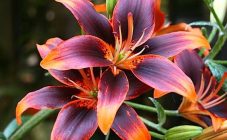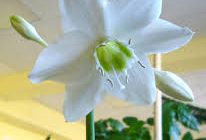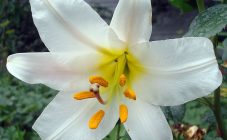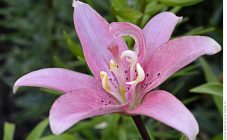Content:
The words "pond" or "lake" are primarily associated with large beautiful flowers floating on the surface of the water, which turn an ordinary body of water into a fabulous one. The extraordinary beauty of the water lilies, as well as the simple requirements for growing, make these flowers the main decoration of both the garden pond and government architectural sites.
Water lily
A water lily and a water lily are one and the same plant. The flower is widespread in fresh water bodies of forest and steppe territories of Europe, Siberia (Eastern and Southern), Central Asia. They are also called lotuses. Sometimes the Chinese swimsuit is mistakenly called the golden lotus - these two plants have similar flowers, but they belong to different families.
People from the tropics do not react well to cold (temperatures below 0 degrees) and lack of sunlight. But through the efforts of breeders, hybrids that are resistant to frost have been bred. Popular frost-resistant varieties of lilies are:
- Alba;
- Marliak Korney;
- Black Princess.
The water lily is often bred in artificial ponds in private plots. Water lily (water lily) belongs to the Kuvshinkov family, the Water lily genus. There are more than 50 species of them in the world.
Popularly, the water lily has the following names: overpower white, mermaid color, water poppy, beaver, white chickens, water companion, water color.
Eating
The high content of edible starch makes the rhizome of the plant edible. True, it also contains tannins, which must be extracted from the product by soaking. Cakes are baked from dried and chopped roots. Boiled roots are also fried for a side dish. The largest amount of starch is found in plants in autumn.
The seeds of the culture are also edible. In addition to starch, they contain oil. The seeds are fried and chopped. A drink like coffee or chicory is prepared from ground seeds; it is also added to sauces as a spice.
Medical use
This plant has found applications in medicine and pharmacy. Water lily root tincture is used as a sedative, pain reliever. A decoction of the roots helps with skin rashes, diseases of the respiratory organs and spleen.
In ancient times, healers used decoctions and infusions of water lilies to stop internal and external bleeding. In folk medicine, the roots of the plant are used to combat fungal and bacterial diseases. Fresh leaves, wrapped in gauze in a crushed form, are applied to burns and abscesses.
Characteristic features of culture
The water lily "dwells" in ponds, rivers and freshwater lakes (where the flow is smallest), has a very strong, wide, densely intertwined root system, which firmly adheres to the bottom soil. The roots reach 2.5-3 m in height.Thanks to such an air system, even a river lily floats freely on the water, despite the current, rainfall and wind.
The egg-shaped leaves of the water lily have a dense glossy structure. In a young plant, they are pink; during the growing season, they change their shade to marsh green.
Water lily flowers are large (diameter about 30 cm), single. Different types of petals have different colors (white, cream, yellow, purple, blue). The aroma is intense, sweetish. The plant blooms from June to October. Water lily is an insect pollinated crop.
Description of water lily species
Of the many types, some are the most common. These flowers are unpretentious and very decorative.
Yellow water lily
One of the varieties of water lilies is the yellow capsule. The plant has rather fleshy, cylindrical roots, which are rich in starch, alkaloids, tannins, phytosterols, sucrose, ascorbic acid. They cling to the bottom soil with cord-like roots. In addition to the emergent leaf, the egg capsule is also provided with underwater leaves, which differ from the former in structure (folded, transparent).
The flowers are pods 5 cm in diameter, five-petal, greenish at the base and bright yellow at the top. The plant blooms from July to October. The fruits are green slimy, which allows some of them to stay on the water surface and travel long distances.
Lily pink
The fragrant (pink) lake lily grows in the lakes of North America. The depth of flower germination is 40-80 cm. The diameter of the buds is about 15 cm. The flowers exude a sugary sweet smell.
White water lily
White water lily (nymphaea alba) is the most common species. It is also called a white water lily or white nymph. It is grown both as a beautiful decorative flower, and for the manufacture of medicinal products, and for food use.
The roots of the plant are up to 3 m long. The stems are erect. The leaves are solitary, emerald in color, shaped like a heart, up to 35 cm in diameter. The flowers are large (20 cm in diameter), snow-white, and the stamens at the buds are bright yellow. Flowers open only in clear sunny weather. Flowering is observed from the second half of July to the end of August. The aroma of a white water lily is delicate, light. The jug-shaped green fruits ripen in early autumn.
Reproduction of a white lily is possible by seeds and dividing the bush. Unlike other varieties, this type of water lily is listed in the Red Book in almost all regions of Russia.
Nymphaea water lily (nymphaéa)
This type of water lily is grown at home, in indoor aquariums. The birthplace of the flower is the swamps of West Africa (swamp lily). It is distinguished by dark purple spots on the plate of the heart-shaped leaf. Flowers are white and pink.
Breeding and planting care
Reproduction and care of the lily occurs in the spring and summer. In winter, the flower sleeps and you do not need to care for it.
The awakening begins in April. Young twigs (pagons) of light green color sprout from the rhizome. By early summer, they reach the surface of the water and form leaves and buds. The flower lives for about 5 days, then withers and sinks to the bottom. Further, seeds ripen in the bud and are sown on the bottom soil or float to the surface and spread over the nearby territory (in nature, this method of reproduction is ineffective).
Reproduction in artificial conditions
Typically, water lilies reproduce by sprouting lateral shoots. How many new shoots there will be depends on the age of the water lily.
Florists usually breed the plant with seeds. The seed planting process is carried out as follows:
- sand is poured onto the bottom of a shallow container and seeds are sown, plantings are heavily flooded with water (2-3 cm above the ground);
- 5-7 days after germination, the seedlings are seated at a distance of 2 cm from each other;
- after 3-4 days, the distance between the seedlings is increased to 3 cm;
- a few days later, young plants are seated in separate containers and sink to the bottom of the reservoir, the water in which must be warm (not lower than +22 degrees);
- after 7-10 days, seedlings can be planted in permanent pots.
Care
When caring for water lilies, it is important to follow some rules:
- feeding with bone meal, compost or special additives for domestic underwater plants;
- providing non-freezing depth of the pond or storage in a warm room;
- compulsory breeding of fish.
At temperatures below 15-17 degrees, the culture must be transferred to heat.
In order to detect a disease or pest infestation in time, the water lily must be regularly carefully examined. If small insects appear on the organs of the plant, change color or spots appear on the leaves and buds, it is necessary to determine the cause and take appropriate measures.
Planting a water lily
The seedlings are planted in a low but wide container. Drainage holes are drilled at the bottom of the pan. Just coarse sand or garden soil is suitable as a soil. It is not recommended to use peat - there is a high probability of algae reproduction. To prevent the soil from being washed out, it is advisable to put burlap on the bottom of the pot.
Landing place
For successful growth, a culture needs the following conditions:
- lack of flow;
- pond depth 20-30 cm;
- silty bottom soil;
- illuminated area.
In deep freezing reservoirs, bushes in pots should be planted (for ease of transfer to winter in warmth), in small ones they can be planted directly into the bottom soil.
Plant transplant
So that a plant that grows in a small container does not lose its decorative effect, every 2-3 years the flower is transplanted into a larger pot. The transplant is carried out by transferring the rhizomes together with a lump of earth. If the rhizome is bulky, then it can be divided (cut with a sharp knife into pieces with 2-4 living buds) and separate bushes can be grown from the pieces.
Conditions for flowering lilies
The culture is very demanding on lighting. When constructing an artificial reservoir, this must be taken into account. If the plant does not have enough light, you can not wait for flowering.
Pest and disease control
For the successful cultivation of water lilies, it is necessary to protect the plantings from diseases and harmful insects. She is often defeated:
- aphids (horsetail infusion will help in a dosage of 500 g per 5 liters of water, agravertine, phytoferms);
- leaf beetle (you should collect insects by hand and immerse the whole flower in water);
- swamp moth (should be hooked into a pond of a water spider);
- leaf spot (you will have to process the plantings with Bordeaux liquid);
- black root rot (the plant should be destroyed).
Experienced growers recommend planting plants next to the pond that are suitable for the color scale and breeding conditions. Various types of violets are considered to be moisture-loving. Red water lilies with orange flowers look wonderful, scarlet ones with lilac flowers, creamy yellowish ones harmonize with white ones.
Growing water lilies is available even for beginners. This requires only a suitable reservoir, the plant itself and adherence to the rules of planting and care. The variety of lily species in the pond will help you create original compositions.


















